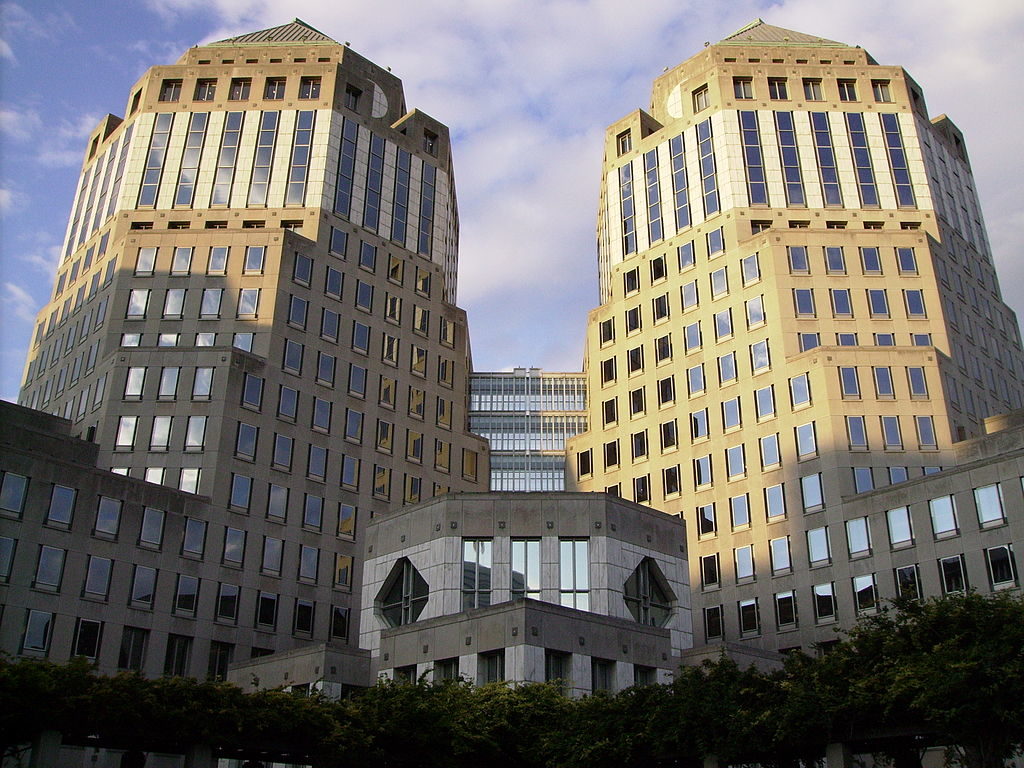
A common theme in this blog is discussing the myriad new content offerings courtesy of the digital age. But beyond creating more material the audience can consume, the need to monetize all this content often takes a back seat. We discussed that conundrum in yesterday’s post as radio CEOs have taken vastly different approaches to digital revenue generation.
We can create all the content we like on any number of platforms, but solving the revenue piece of the puzzle has to be a major priority. In today’s post, my sales counterpart – Paul Jacobs – talks about the dilemma advertisers face and how radio can step into the breach and create win-wins. I can tell you that he thinks about this issue all the time. Let’s hope he can start some important conversations inside radio companies to accelerate and optimize the monetization process. – FJ
Radio is fixated on the content and distribution revolutions – creating more entertainment and information on more platforms. Thanks to smartphones, gadgets like the Amazon Echo, Internet streaming, and podcasts, we are well on our way to building platforms where radio listeners can access content whenever and wherever they like.
This has created challenges for broadcast owners, managers and even consultants, who are constantly trying to figure out where to place their bets. That’s one of the motivators behind our Techsurveys – to help stations understand where the audience is shifting, and how broadcasters can get there first.
With so many digital distribution channels now available on which to enjoy radio content (apps, streams, podcasts, etc.), additional pressure has been amped up on salespeople, who instead of being able to calculate a CPM, now need to master an entirely new array of metrics in order to monetize selling banner ads, in-stream ad insertion, social media posts, and email blasts.
One overlooked aspect of this digital advertising revolution is all the commotion occurring on the other side of the aisle – the advertising community. Like broadcasters, they are swamped with new marketing opportunities and are under constant stress to figure out how to solve their problems. Two recent news stories suggest they haven’t figured it out either. And their confusion spawns opportunities for broadcasters.
The blaring headline in AdAge that captured my attention involved the biggest, smartest, and savviest advertiser of them all – Procter &  Gamble:
Gamble:
“P&G Slashes Digital Ads By $140M Over Brand Safety – Sales Rise Anyway”
If there is any advertiser with a firm understanding of how advertising works, it’s P&G. Fueled by concerns about their commercials appearing prior to videos that might contain objectionable material, they pulled back because of the “wild west” aspect of digital advertising.
Citing the potential for problems as well as waste in digital advertising, P&G’s CFO Jon Moeller sums up their nagging concerns:
“Clearly we don’t need to be spending money that is seen by a bot and not a person. Clearly, we don’t need to be spending money on ads that are placed in inappropriate places, and that’s why you see a significant reduction.”
When the head finance person inside a marketing machine like P&G makes a statement like this, it screams a lack of confidence in digital advertising.
And the subtext is important, too. P&G cancelled $140 million in digital advertising and their business actually increased.
At around the same time this story came out, Borrell & Associates posted an amazing chart. Taken from their annual survey of local advertisers conducted this past spring, Borrell found that when it comes to making ad buys, nearly three out of four decisions (72%) are made by what he describes as “Novice/Apprentices” – people inexperienced in marketing. And of those, most make these judgments without anyone else’s help.

They call this phenomenon “Rookie Marketers,” and conclude that “misfires and frustrations are likely to spur a stronger demand for marketing education and a greater level of consultation from marketing-savvy reps.”
And that’s where the opportunity lies for the radio business. Both the P&G story and Borrell’s research underscore how major marketing decisions are being made – whether it’s hundreds of millions of dollars globally or a grand or two locally – without a solid foundation of understanding of what’s being bought, much less the belief it’s even going to work.
At the end of the day, the key to selling radio is confidence. Advertisers need assurances stations will deliver on their promises: Will the spots run as scheduled, will the production be solid, will the promotion or remote come off as planned, will the email database blast go out on time, and of course, will it all work?
Most radio stations have a solid history of success from which to draw upon. But digital providers? Not so much. I recently visited with several advertisers in a few select markets, and even those who are spending money in digital don’t truly understand what they’re buying or whether it’s even working.
So, radio has a big opportunity here. First of all, we know the core business still works for clients. Advertisers have historic confidence in traditional media, and salespeople should trumpet that fact. But in the digital realm, radio stations that provide integrated advertising opportunities need to do more than just provide metrics and banner ad sizes. They need to do the following:
1. Develop proven models and provide case studies
There has to be demonstrated results so advertisers know what success looks like. I’m always amazed that how few stations simply haven’t gathered and packaged success stories. They work.
2. Make the packages simple and understandable
This one’s a must. Confusion reigns in the digital advertising space, so putting together packages that are clear and logical is a way to cut through the fog. Advertisers know they want digital – so work to make integrated programs clean.
3. Monitor results and provide reports that make sense
It’s essential that advertisers see how the program’s working. And in the event certain aspects aren’t producing results, being flexible enough to call an audible and try something different. Don’t try to overwhelm them with metrics. Confusion doesn’t work in your favor.
4. Make sure ads, social media posts, email blasts, and all other elements run as promised and look great
Unlike traditional radio advertising, the look, feel, and the user experience are critically important. A graphic artist that serves multiple stations in the cluster is a must if web ads and digital marketing is going to cut through the clutter.
5. Use the best talent at your station or cluster to drive optimal results
This will vary from operation to operation. It could be a program director, it might be the digital person, and it could possibly be even a sales assistant. But it’s essential to drive results with smart, savvy, creative digital ads and programs. It has a higher degree of difficulty than cutting yet another :30 spot or writing copy for a live read. Hopefully somewhere in the building there are people who have a flair for digital advertising. (These people are worth their weigh in gold.)
Additionally, serious broadcasters who embrace marketing their digital platforms should consider creating seminars and/or webinars for clients about how to buy, manage, and evaluate an integrated program. This can elevate the client’s expertise (which obviously needs to occur) while positioning station staffers as credible thought leaders.
And finally, one of the key speed bumps facing stations in their quest to engender advertiser confidence is the constant turnover of radio salespeople. Around the country, advertisers often mention this as their single biggest complaint. It’s costing our industry.
While all salespeople have their unique qualities and skills, it is still about relationships, trust, solutions, and most importantly, confidence that what is being sold will be delivered as promised so the client can sleep at night.
Radio is well-positioned for digital ad sales success. The industry delivers a powerful blend of traditional media reach and brand strength, coupled with the ability to drive mass audiences to digital platforms. But given the travails of P&G and Borrell’s data, there’s a lot of work that needs to be done.
Marketers are looking for answers. Radio is in a position to provide them – along with a sense of confidence.
- For Radio, Will It Be Christmas In April (And Hopefully, May)? - April 21, 2025
- The Revolution Will Not Be Monetized - December 30, 2024
- What Kind Of Team Do You Want To Be? - October 4, 2024




Paul, Excellent! “Rookie Marketers” is funny & sad. As long as folks have ears, word of mouth media is strong. Time to apply the captivating substance. Thank you. Clark, Boston. http://www.broadcastideas.com
Clark, thanks for the comment. It really is sad that people who are at agencies spending their client’s dollars or local business owners who are spending their own simply don’t have the aptitude to do it properly. And that’s the opportunity for radio – become a credible, reliable resource with a proven approach. It’s all there for the taking.
All of your suggestions are good – practical and actionable. Helping customers understand what they should buy, why, tracking the results and making changes where appropriate makes more than good sense.
But buying units have always been set up more with low cost than media savvy in mind – at least since I started in radio sales so long ago that many now extinct species roamed the earth. And now that there are so many more choices and disparate means of measuring them, the potential for mistakes is bigger than when the Dodo proliferated.
Radio pays less to its sellers and advertisers pay less to its buyers and you get what you pay for. Radio hasn’t been anywhere near immune to the temptation to reduce sales costs and that has had a real impact on the quality of its sales effort…and quite possibly a couple of points in revenue. All the more reason that Paul’s suggestions are so on point.
Bob, I knew I’d hear from you on this post. We’re talking the same language – to be successful selling digital requires a different mindset than selling spot advertising, which has become a commodity augmented by free remotes and live reads. Digital advertising stands apart because it’s accountable – clients pay for actions. This means that we either need to re-train sellers, or hire new ones to handle this.
And of course as Borrell shows, we need to have people on staff to educate the clients who think they know what they want to buy, but don’t have much of an idea how to do it.